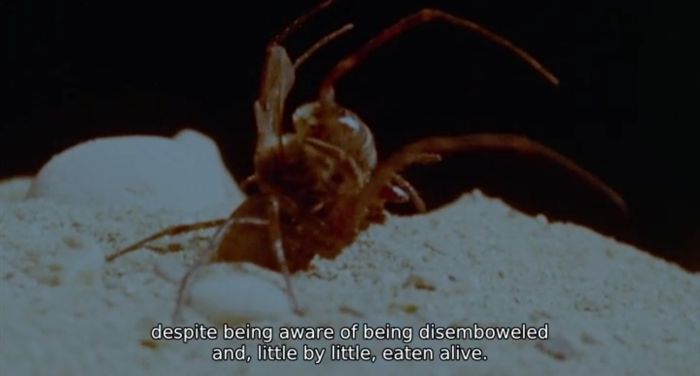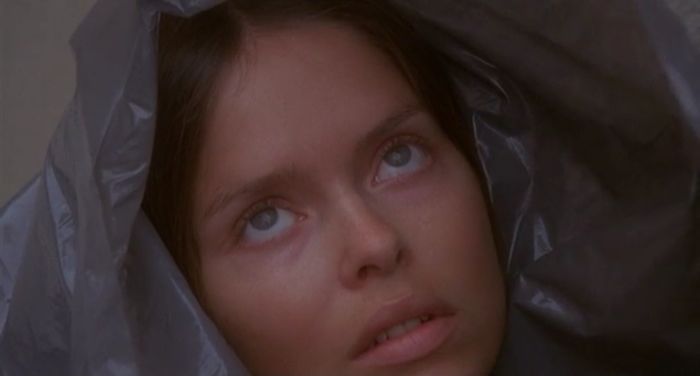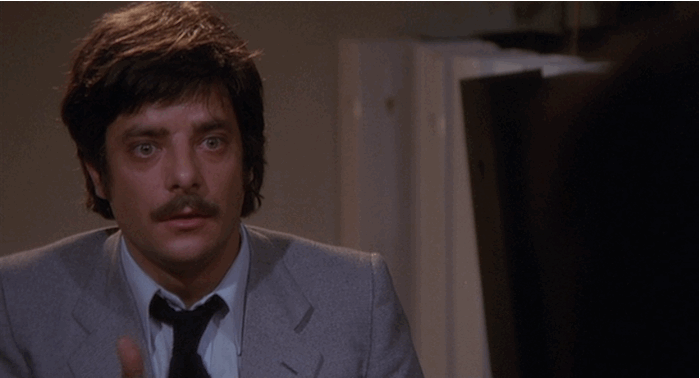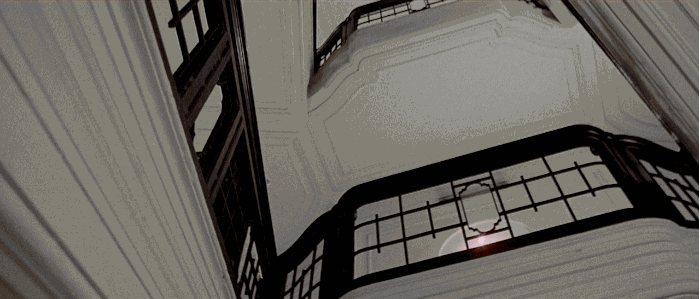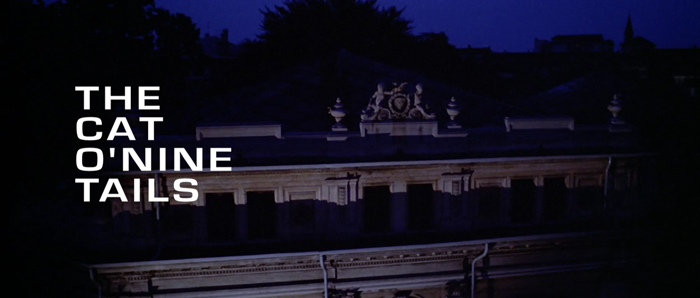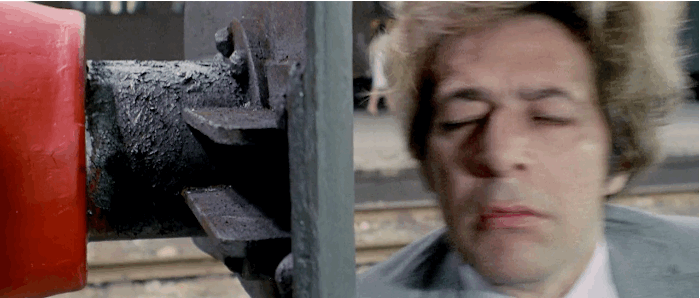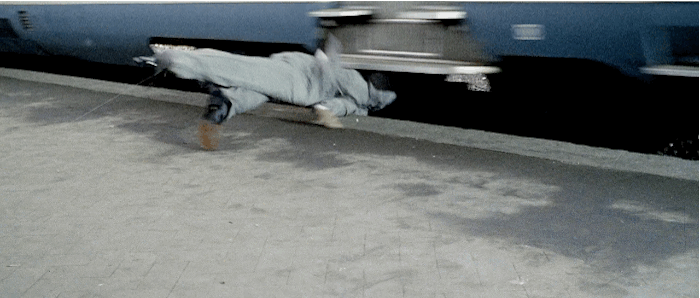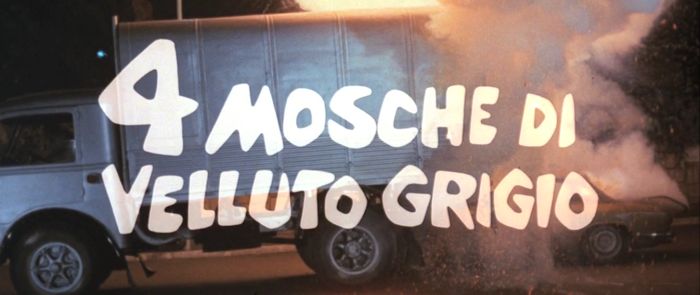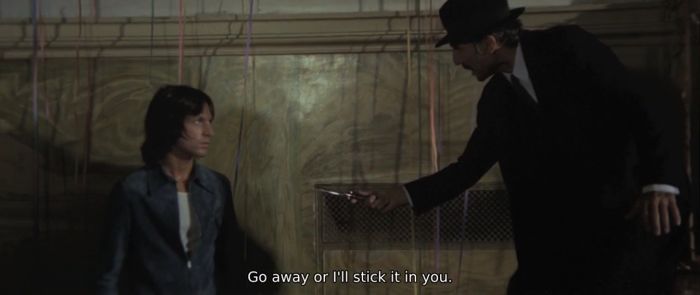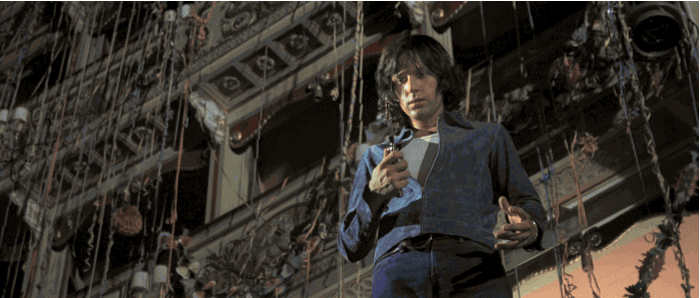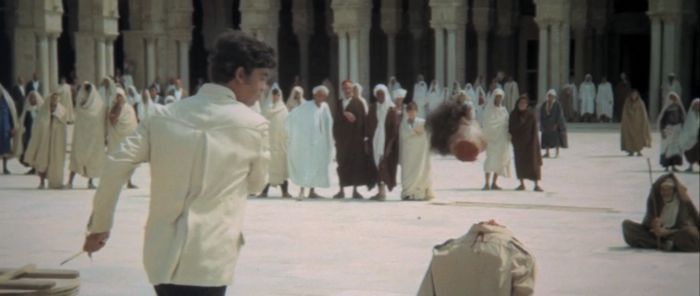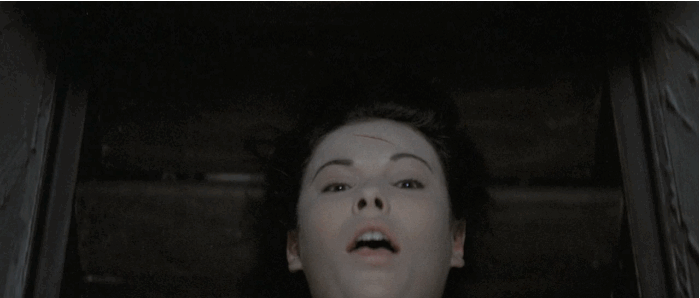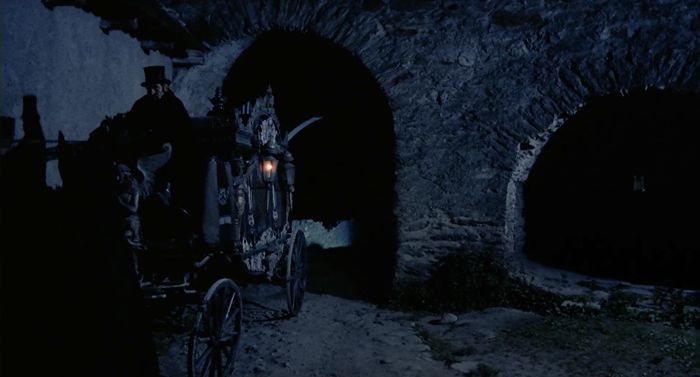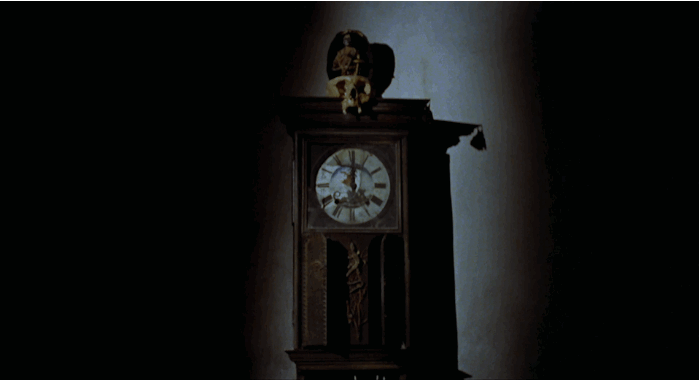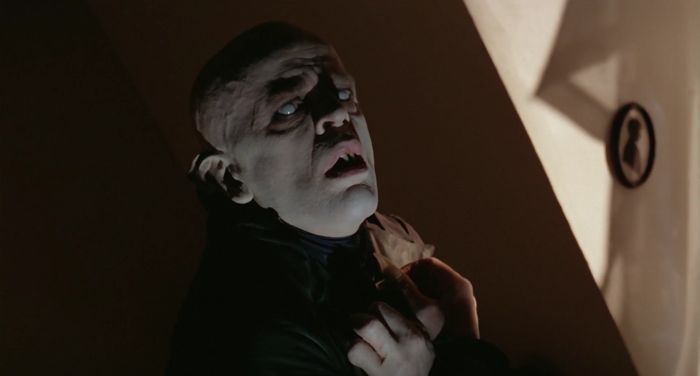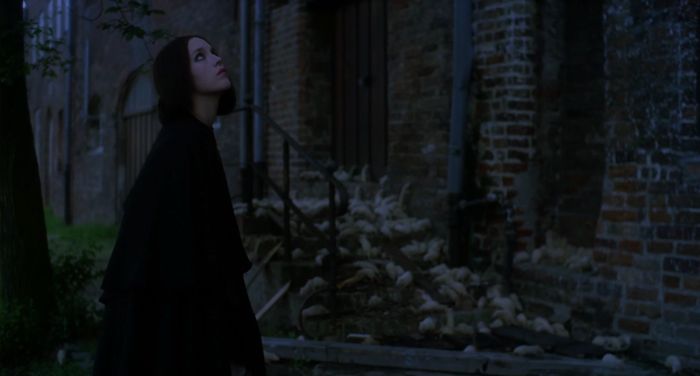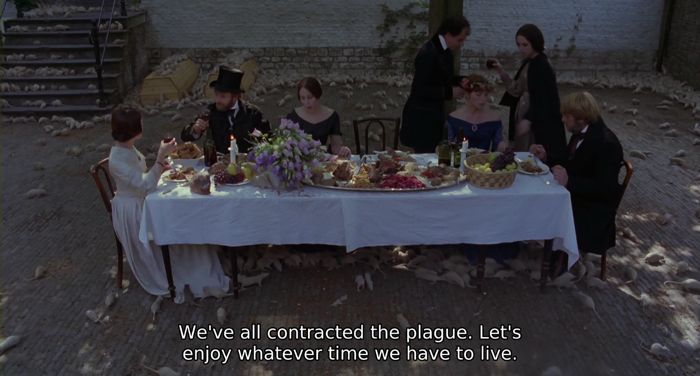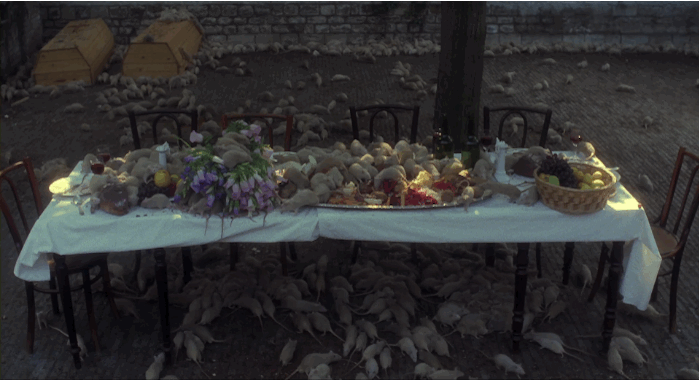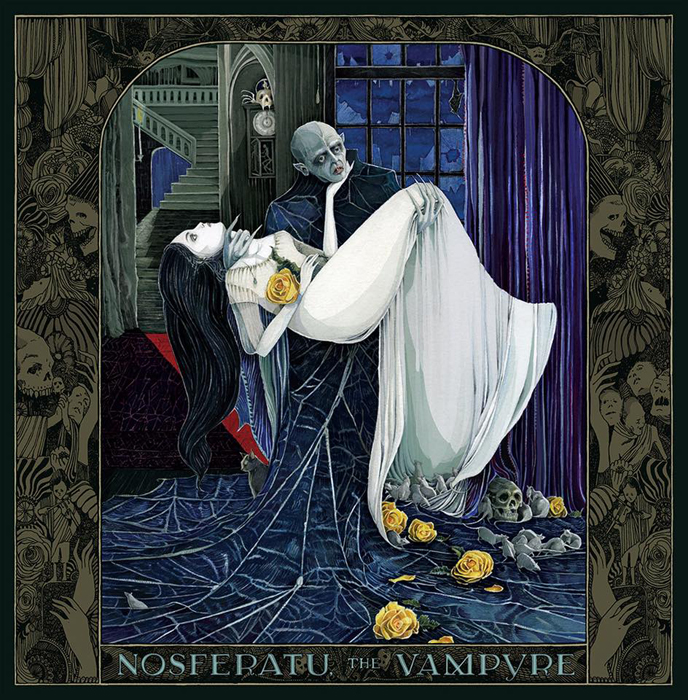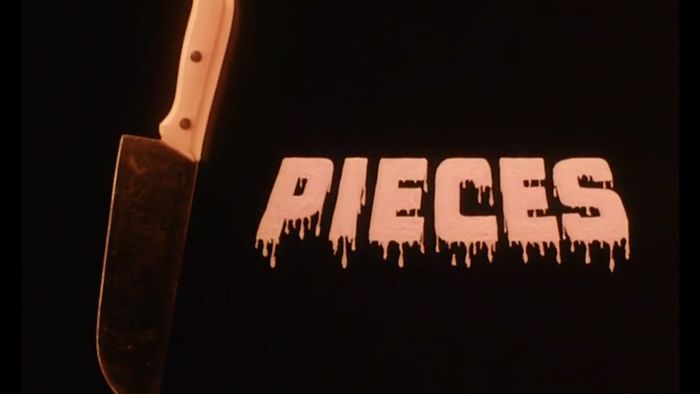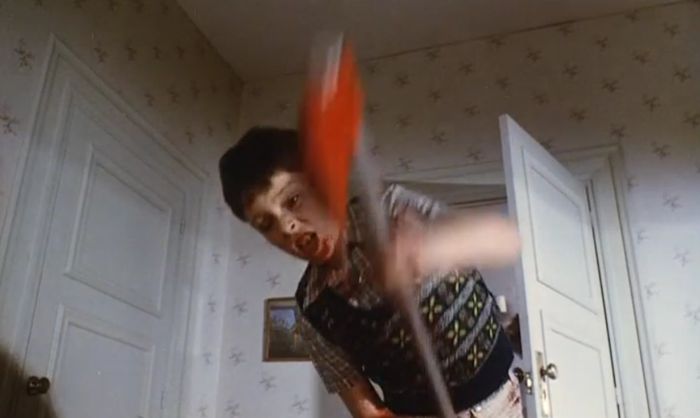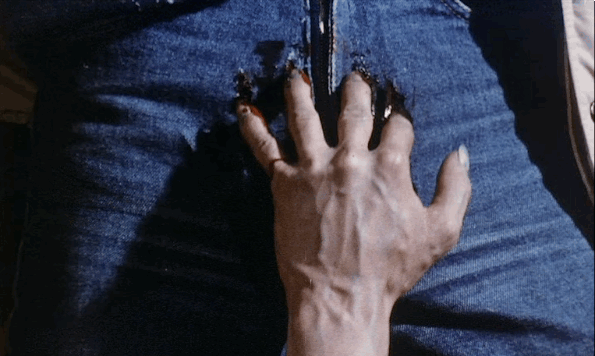The other night, I watched Mario Bava’s Blood and Black Lace. It was recommended to me a few years ago by my friend Jeremy, who was taken aback and shocked that I had never seen it. I swore to him that I would watch it at the first available opportunity. A couple months after that, I started watching it, and then fell asleep after about twenty minutes or so. I don’t know if it turned me off because of the subtitles, or because of the slow and dramatic storytelling, or what. Having now seen it in its entirety, I absolutely cannot believe that I fell asleep during this movie.
Because this movie is great.
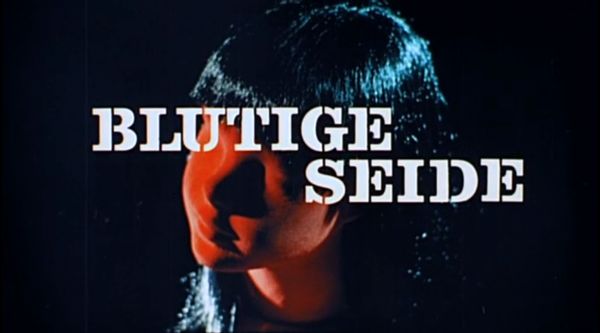
The version that I watched was most likely German in origin, hence the title (which translates to “Bloody Silk,” apparently).
I have made the mistake of assuming that Bava was a lesser director. In all of my thinking about Italian horror in general, I’ve always been an Argento man through-and-through (primarily because of Suspiria, which is one of the greatest horror movies ever made). After Argento came Lucio Fulci (primarily for Zombie, but also The Beyond and The House By the Cemetary). I’m not sure why I thought that– maybe because the only Bava I’d seen was Danger: Diabolik, which is a masterpiece, but of a different stripe altogether.
Blood and Black Lace is throwing my “Italian Horror Directors” ranking list into total disarray. You can see a whole lot of Bava in Argento– there are a lot of direct correlations between this movie and the Argento movies I discussed previously, which came out a half-dozen years after this. Hell, there are a lot of direct correlations between this movie and Suspiria: the use of color, the use of pacing, the use of specific emotional cues among the murder set-pieces.
This movie sort of laid the foundation for a lot of my favorite horror movies of this style and type: it’s slow and brutal and absolutely beautiful.
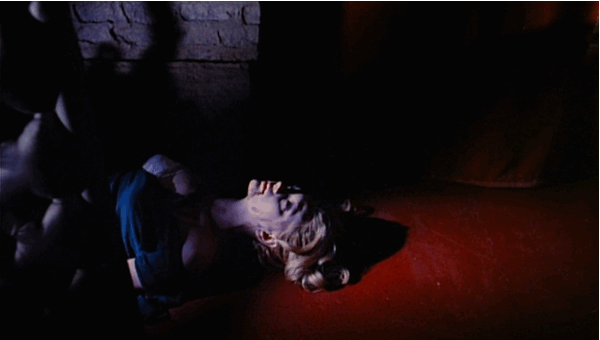
The plot is almost circumstantial. An Italian fashion and design house is filled with administrators, models, designers, and fabricators. Their personal lives are riddled with vice and misdeeds: drug abuse and trafficking, surreptitious abortions, adultery, mounting unpaid debts, corruption, and blackmail.
The design house is also beautiful in and of itself. Among the white wicker dress forms, there are mannequins in deep bleeding red; everything’s filled with supersaturated colors, and everyone casts an ominous shadow.

One of the young and beautiful models, Isabella, has been keeping a diary. In this diary, she’s been keeping records of all of her coworkers’ horrible transgressive societal taboos, complete with names, dates, and all the grisly details. Because of course you would do that, right– maintain a running tally of all your acquaintances’ shameful secrets? What could go wrong?
She’s murdered for it, of course– within the first five minutes of the movie. By a person wearing black leather gloves, a long trench coat, and a flesh-colored mask that covers all his features. Think Rorschach without the patterns, and flesh-colored. So, think The Question, if your comic-book knowledge runs that deep.
Pretty stylish choices, anonymous murderer. Pretty stylish choices, Mario Bava.

While the fashion house is preparing for their next show, and in full view of literally everyone else in the house, Nicole finds Isabella’s diary. Peggy takes it out of her purse and runs off with it. After the show, Nicole drives to an antique shop owned by her lover. There’s a knock at the door. Nicole answers it, and the murderer rushes through, searching for the diary, and chases her around.
Bava’s directorial talents are on full display here. Nicole is chased through what appears to be a massive medieval warehouse full of beautiful antiques, many of which are amazingly colorful and fascinating. Some of the lightbulbs are apparently purple, some are green. Some are deep red. There’s a beautiful shot where Nicole runs up some stairs and the camera follows her up– it looks like a crane shot– and the colors shift with the movement. The chase scene is full of amazing moments.
That crane shot, by the way– not actually a crane shot. In my research about this movie to write this blog, I found a bit about this chase scene, which claimed that Bava didn’t have much of a budget and had to improvise– so he used a child’s little red wagon for tracking shots, and a “see-saw mechanism” for crane shots. The scene goes on for a very long time, and manages to maintain suspense throughout. Nicole finally manages to get into a hallway and make it to the front door, which she begins to unlock–
Surprise! The murderer has somehow managed to silently put on a full coat of medieval plate armor, including the helmet. Nicole gets a weird medieval three-pronged murderglove to the face! The murderer searches her, but the diary is nowhere to be found.
While all this is happening, Peggy has taken the diary home. All her secrets are in it as well as everyone else’s, so she throws it into her fireplace and turns it into ashes. Whew! Crisis averted!
Right? Crisis averted, guys?
Oh no, wait. The masked figure bursts in on her, roughs her up, and demands the diary. She says she burned it, but he doesn’t believe her, so the roughing-up continues. The police arrive during his interrogation, so he slings her over his shoulder and hauls her off to some undisclosed location. He demands the diary again, she again tells him that she burned it. So, of course, he presses her face against a red-hot furnace and then kills her.
The police have found Nicole’s body by this point, so they know there’s a definite pattern of murder here. They’ve also uncovered a little bit about the drugs. They round up a bunch of suspects and hold them in custody.
Greta, another girl, drives home from the fashion house. Once she gets there, she hears a strange noise coming from the back of her car. She opens the trunk, and Peggy’s burned-ass face rolls out. The camera holds on it for a long time as the wind blows through her hair. It’s oddly beautiful.
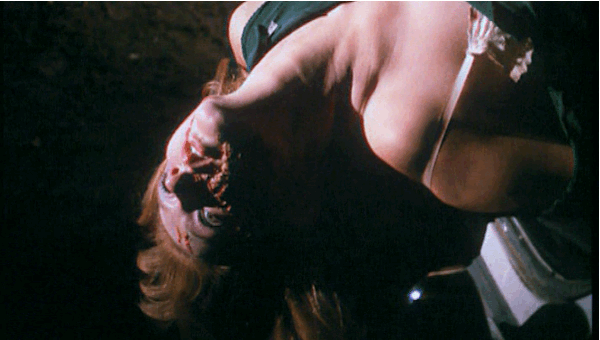
Instead of calling the police, the way you or I would, Greta chooses a different path. Remember, she’s carrying the burden of a whole pocketful of destructive personal secrets. I’m not positive about this, but I believe she was part of the drug trafficking ring? She helped one of the male designers keep himself all smacked up all the time? Anyway, she’s racked with secrets!
Remember that part about the plot being secondary to the visuals and murder set-pieces?
Greta slowly, clumsily, awkwardly puts her arms under poor dead Peggy’s arms, hoists her out of the trunk, and carries her into the house. The camera doesn’t cut or look away for any of this, even when Greta tries to maneuver the body up a set of stairs, stumbles, and drops it.
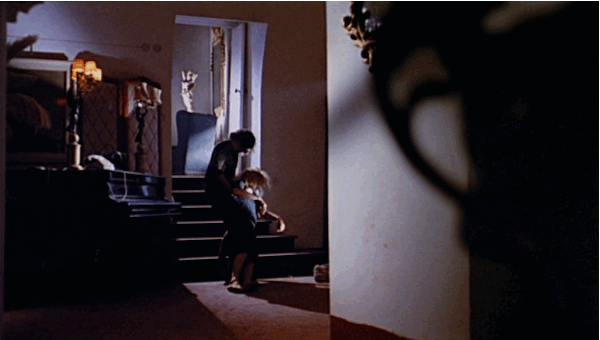
The murderous set-pieces in this movie are two things. They are brutal and they are beautiful.
They are brutal in that there is zero titillation to really be had. You can’t really watch these murders rapt with glee, enjoying the choreography and violence. Bava’s nearly Hitchcockian in his reluctance to show actual violence, preferring short quick cuts; he’ll draw out the lead-up to violence, and he’ll linger on the horrible aftermath, but he doesn’t spend a whole lot of time on the actual moment-to-moment gore. Far from being a disappointment, this ends up being the merciful choice. The violence itself– not the lead-up, not the aftermath– is extremely unpleasant. I found myself wincing more than once, and even looking away. When Peggy’s face hits that red-hot furnace, the shot is from the back of her head, and it lasts maybe half a second, but holy shit, it packs some hellacious impact. When Greta stumbles and drops that body, the camera doesn’t even flinch. So brutal.
They are beautiful in their lead-up and aftermath. That ornate, lingering chase through the antique shop. Peggy’s hair blowing in the wind. The dappled moonlight scattering on Isabella’s face through the leaves. It’s beautiful and horrible.
When Tao-Li (yet another beautiful model) gets drowned in the bathtub, and then has her wrists slashed to make it look like suicide, it’s eerie and slow and beautiful:
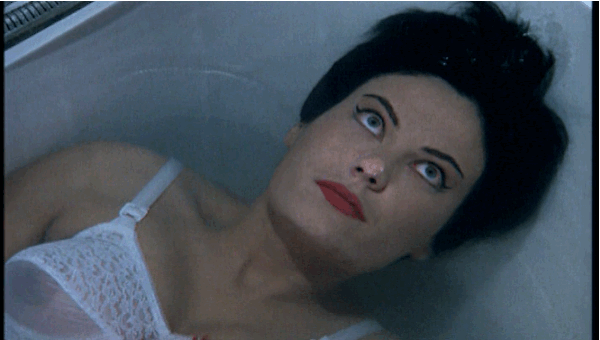
Even this horrible shot, showing the corpses of Peggy and Greta (oh yeah, she gets murdered too), is beautiful in its eerie composition, coloring, and framing.
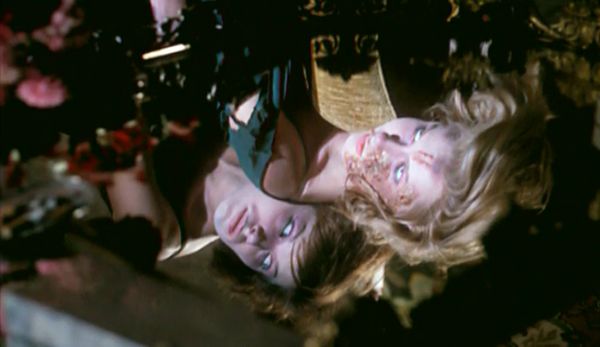
I was deeply impressed with Blood and Black Lace. I’ve decided that I need to familiarize myself with Mario Bava’s catalog further– so y’all can look forward to more entries about him in the near future.
I really can’t stress enough how creepy, beautiful, and well-directed this movie is.

I think this might be my last giallo for a while. I was getting a bit burned out, and with this masterpiece, I think the binge has reached its inevitable end. The giallo run is going out on a high note.


